Pobol y Cwm
26th February 2016
 (Above) The main Coire Ardair path today. It’s been some time since we’ve had snowfall but the path is still a bit of a graunch as you have to peg along in the deep footprints of those who went before…and there haven’t been many. Path does improve a little bit further along. Skis or snow shoes are definitely advantageous if you have plans to venture away from the path.
(Above) The main Coire Ardair path today. It’s been some time since we’ve had snowfall but the path is still a bit of a graunch as you have to peg along in the deep footprints of those who went before…and there haven’t been many. Path does improve a little bit further along. Skis or snow shoes are definitely advantageous if you have plans to venture away from the path.
 (Above) Typical snow cover in the glen. This shot was taken from the main path looking down onto the drumlins and burn at approx 500m altitude.
(Above) Typical snow cover in the glen. This shot was taken from the main path looking down onto the drumlins and burn at approx 500m altitude.
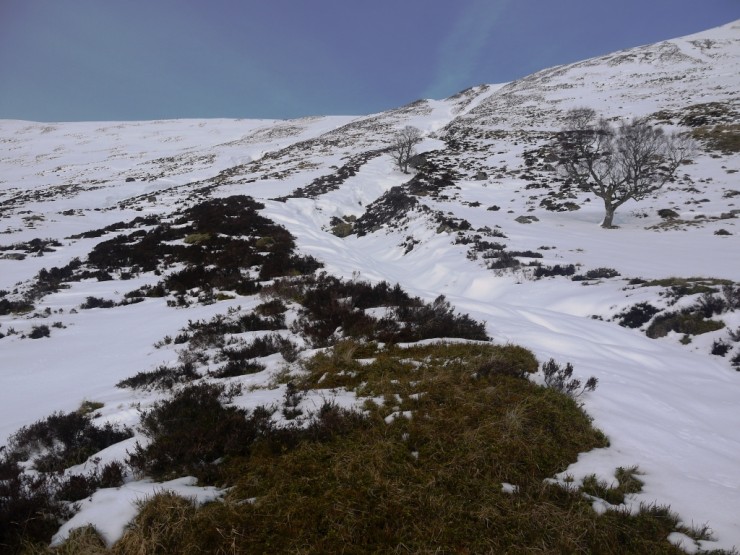 (Above) Finding a way to the plateau without breaking through a treacherous crust and/or deep snow means following available scoured lines of vegetation. Recommended if your just foot soldiering.
(Above) Finding a way to the plateau without breaking through a treacherous crust and/or deep snow means following available scoured lines of vegetation. Recommended if your just foot soldiering.
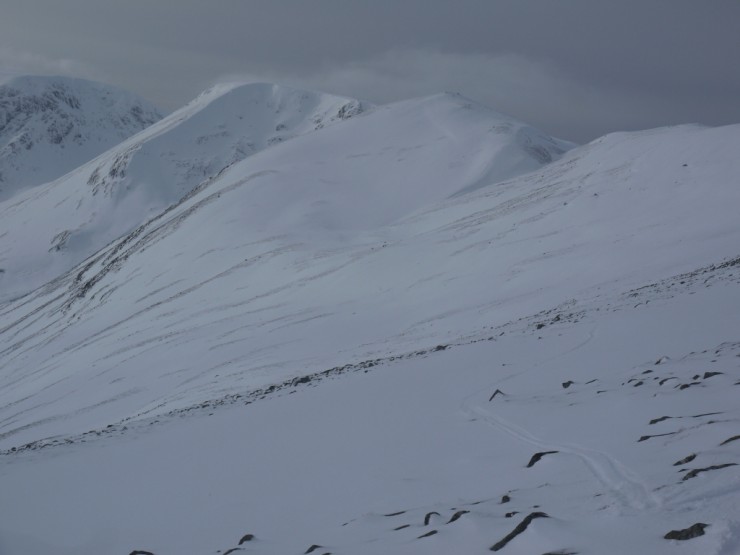 (Above) Carn Liath plateau snow cover. Looking from near Carn Liath to the Min Window (upper right of shot). Great cover! Doing the round on skis is definitely on. Hasn’t been this good for some time. A bit easier travel here if you’re just foot soldiering as it’s scoured and crusty but firm and softer as well – Â quite a variety of surfaces.
(Above) Carn Liath plateau snow cover. Looking from near Carn Liath to the Min Window (upper right of shot). Great cover! Doing the round on skis is definitely on. Hasn’t been this good for some time. A bit easier travel here if you’re just foot soldiering as it’s scoured and crusty but firm and softer as well – Â quite a variety of surfaces.
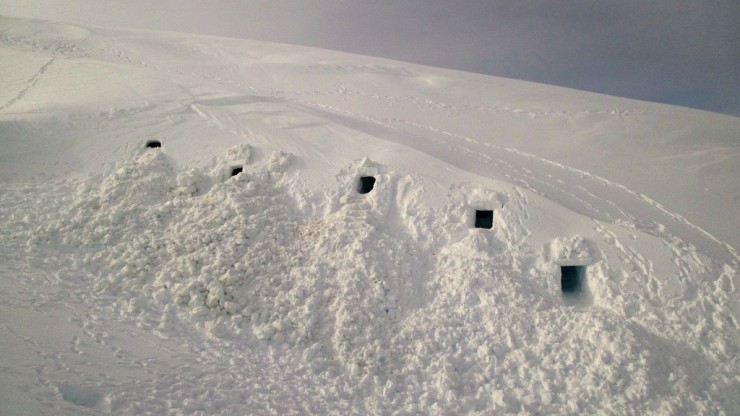 (Above) Pobol y Cwm (translation: people of the valley. The title of a long running and very popular Welsh-speaking TV ‘soap’ – a bit like Coronation Street but with more words beginning with double L) Plas y Brenin, the well known national mountaineering centre in North Wales, are here in numbers at the moment. Impressively evenly spaced snow holes in a re-entrant off the Carn Liath plateau (a wee bit of a military influence, methinks…). The centre one definitely has a Kevin McLeod (he of ‘Grand Designs’ fame) flourish: gable ended roof thing over the front entrance and a ‘big statement’ elevated staircase. Very aspirational! Actually the site was left totally devoid of any rubbish, litter or other “mess”. Kudos to the Brenin!
(Above) Pobol y Cwm (translation: people of the valley. The title of a long running and very popular Welsh-speaking TV ‘soap’ – a bit like Coronation Street but with more words beginning with double L) Plas y Brenin, the well known national mountaineering centre in North Wales, are here in numbers at the moment. Impressively evenly spaced snow holes in a re-entrant off the Carn Liath plateau (a wee bit of a military influence, methinks…). The centre one definitely has a Kevin McLeod (he of ‘Grand Designs’ fame) flourish: gable ended roof thing over the front entrance and a ‘big statement’ elevated staircase. Very aspirational! Actually the site was left totally devoid of any rubbish, litter or other “mess”. Kudos to the Brenin!
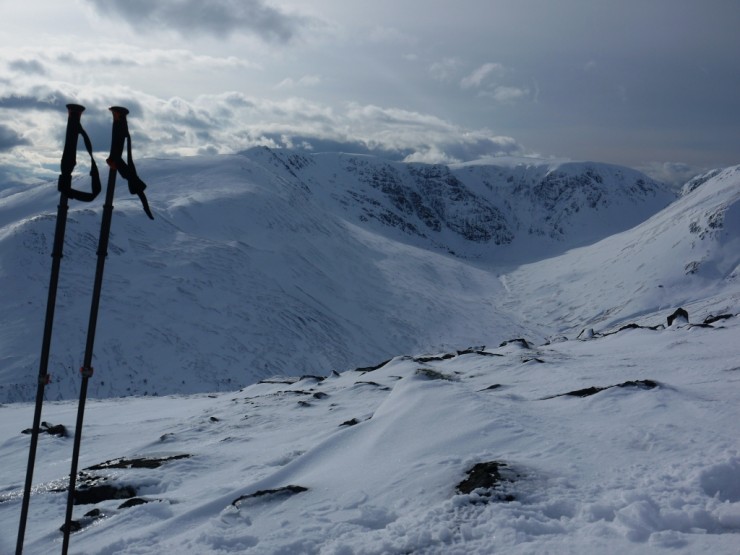 (Above) Looking down Coire Ardair to the Post Face from near Carn Liath. Good snow cover on Sron a Ghoire.
(Above) Looking down Coire Ardair to the Post Face from near Carn Liath. Good snow cover on Sron a Ghoire.
 (Above) Anachronistic gate on the slopes between Na Cnapanan and Carn Liath. Evidence of an old, long and long-gone fence that made its way up from near Aberarder to somewhere over the crest of the plateau and into the Upper Spey. I always try to open the gate when I pass and leave it open to see if anyone closes it, and each time I return it’s closed again! There are definitely some OCD types amongst you…..
(Above) Anachronistic gate on the slopes between Na Cnapanan and Carn Liath. Evidence of an old, long and long-gone fence that made its way up from near Aberarder to somewhere over the crest of the plateau and into the Upper Spey. I always try to open the gate when I pass and leave it open to see if anyone closes it, and each time I return it’s closed again! There are definitely some OCD types amongst you…..
 (Above) Sron a Ghoire with debris from the large avalanche early on the 22nd Feb. A bit of firnspiegel developed on the surface of these sun-exposed slopes later in the day. Photo doesn’t show it well but the firnspiegel shone and was quite glossy in sunlight.
(Above) Sron a Ghoire with debris from the large avalanche early on the 22nd Feb. A bit of firnspiegel developed on the surface of these sun-exposed slopes later in the day. Photo doesn’t show it well but the firnspiegel shone and was quite glossy in sunlight.
Finally, something on stability and hazard at the moment. The prolonged cold spell has preserved instability in the snowpack (see the report for locations) but it is being bridged over by quite dense snow. The weak layers are shearing readily and cleanly and as the dense snow is supportive – bridging over the weak layers – it will bear some weight before failing. The upshot of this is that if the loading is sufficient the tensile strength of the slab will fail quickly and the failure will propagate. If it breaks it’s likely to break wide and deep. We’re unlikely to see any natural (untriggered) avalanches right now but since the start of February there have been 17 avalanches in the Scottish Highlands triggered by and involving humans.
Have a great week-end but take care out there.
Comments on this post
Got something to say? Leave a comment


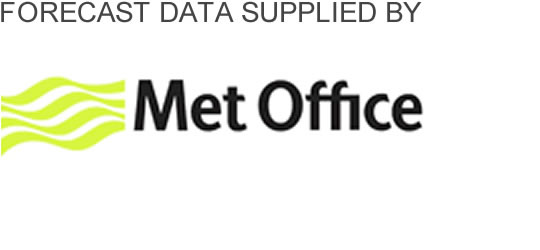
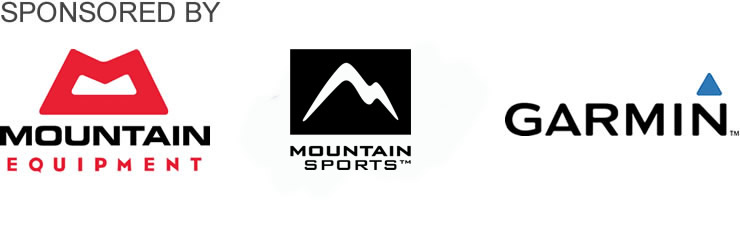
Grant Duff
26th February 2016 8:13 pm
I’ve closed that gate a few times. OCD wins.
danny
29th February 2016 12:04 pm
What is firnspiegel and how significant in terms of avalanche hazard/risk is it?
meagaidhadmin
29th February 2016 3:32 pm
Hi Danny,
Thanks for your comment.
Firnspiegel (or firn spiegel) is well explained here:http://www.avalanche-center.org/Education/glossary/firnspiegel.php
Firnspiegel tells us little about immediate stability since it is a really local effect in the top couple of millimetres of the snowpack. If there are deeper buried weak layers beneath it then these would be much more concerning when considering immediate stability and hazard.
Some climbers/mountaineeers/ski tourers have a rule of thumb that any snowpack with a crust on top of it is relatively stable. Definitely not always the case! A thick crust which comes about after a few sustained melt-freeze cycles would be a better indicator of a stabilising trend, but if there are deeper buried weak layers then it’s really important that they are factored in to your overall stability evaluation. Considering one factor alone is insufficient (apart from if you see avalanche activity or new debris after which decision-making is simple).
However, if the firnspigel crust persists it could become an effective bed-surface for future avalanche activity if there’s heavy snowfall and/or sustained drifting of snow on top of it. We’ve also been finding that when buried these crusts are susceptible, in certain weather and snowpack conditions, to the development of facetted crystals either side of them which was something that wasn’t well understood in the not so distant past.
Kate Gilliver
29th February 2016 1:48 pm
Well done, you’ve made it to the BBC Wales news website!
http://www.bbc.co.uk/news/uk-scotland-highlands-islands-35686059
(not sure what that says about the news down here in Wales, but never mind!)
meagaidhadmin
29th February 2016 3:00 pm
I saw that on the BBC News Highlands & Islands website, Kate. Obviously a slow news day! The BBC journalist managed to strip the photo and caption of all its embedded humour, too. Good plug for the ‘Brenin though.
Andy
1st March 2016 7:17 am
Military influence on the snow holes? That’s a “coincidence” 😉
meagaidhadmin
1st March 2016 8:37 am
Prominent JSMTC hallmarks!